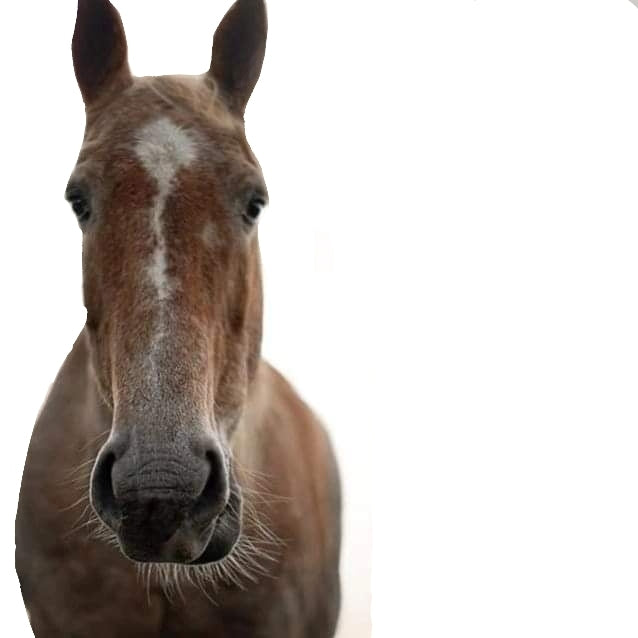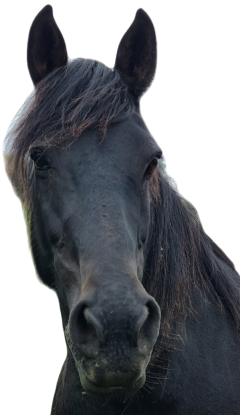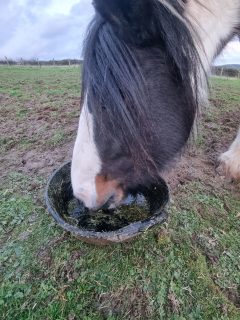
Hot weather and hydration when exercising your horse
With this lovely sunny weather, it's a great time to get out and about on our horses!
It is really important to ensure that our horses stay hydrated in the heat, though. Horses have 2 to 3 times the mass-specific exercise thermal load compared to humans, because half of their body mass is skeletal muscle. Horses also have a smaller surface body area to mass ratio, meaning, that it is much harder for them to dissipate heat through the surface of their body.
One of the ways that horses can cool themselves down is through sweating. They have hypertonic sweat, meaning that it contains more mineral salts (electrolytes) than water - the reverse of humans: we lose more water and retain the salts. Their sweat also contains latherin, a surfactant protein, which is the foamy substance you'll see when horses have really sweated up. This substance helps to wet the (waterproof) coat, so that heat can be lost through evaporation.
The mineral salts contained in horses sweat include sodium, chloride, potassium, magnesium and calcium. Each of these electrolyte salts have crucial roles in the body, including:
- Sodium: Nerve signalling, protein digestion, small intestine digestion, glucose transport.
- Chloride: Carbon dioxide transport, blood pH balance, bile for breaking down fats in the small intestine and stomach acid for breaking down everything passing through the stomach.
- Potassium: Muscle and nerve function, nutrient transport, cardiac function, maintains blood pressure.
- Magnesium: Metabolism of glucose, energy production, muscle and nerve function, protein synthesis, transport of other electrolytes, bone formation, cardiac function and DNA synthesis.
- Calcium: Bone structure, cardiac function, muscle contraction, enzyme catalyst. Acute Calcium deficiency can cause an issue called thumps, where the diaphragmatic contractions become irregular. This looks a lot like hiccups, but it is actually due to calcium loss through sweating, and thus calcium should be administered to the horse to restore normal diaphragmatic contractions when a horse gets thumps.
Water is, of course, also crucial, with a 500kg horse needing about 25litres of water per day, under normal resting conditions, but this increases significantly with factors such as exercise, heat, pregnancy etc. Because of the hypertonic nature of horses sweat, you cannot rehydrate a horse through water alone, these essential electrolytes must be provided too. In humans, when we sweat, our blood becomes more salty which gives us the signal to feel thirsty. In normal circumstances in the horse, the process is the same, but when he is losing significant electrolytes too, the plasma sodium may not be high enough to trigger this thirst response. Soaked hay or grass nuts can be a good way to get hydration into a horse in advance of, or after, working him, particularly in the heat, and if the thirst response is compromised.
Every-day table salt contains sodium and chloride, which are the most abundant salts found in horses sweat, so this is often an adequate supplement to replenish the lost salts, with the remaining lost minerals coming from their feed ration. It is wise to always add some salt to your horses diet, since sodium and chloride are so vital to horses health. Even when provided with a salt lick, horses are unlikely to get enough salt from that alone, whether exercising (and thus sweating) a lot or not. Himalayan salt is a great source, as it also contains a range of other minerals.
Very often, feeds do not contain the correct amounts, or ratios, of these vital electrolyte substances. Therefore, if your horse is regularly worked in the heat, or regularly worked hard, or generally in prolonged periods of hot weather, as we've seen recently, I would recommend a decent electrolyte to replenish what is lost through sweat. Electrolyte products often contain sugars such as dextrose, which is included not just to make the product more palatable, but to help uptake the electrolytes on a cellular level. This should be the last (and smallest) ingredient of the product.



